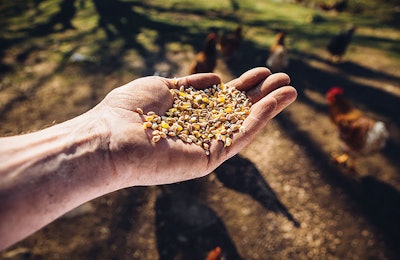
Meeting the demands of consumer preferences in poultry production has increasingly affected the way poultry feed is formulated. Whether imposed by regulations or the evolving marketing of chicken meat and eggs, the 2018 Poultry Nutrition & Feed Survey offers a firsthand look at how these changes and challenges have affected poultry feed formulations and, in many cases, the company's bottom line.
Read the entire report about the 2018 Poultry Nutrition & Feed Survey exclusively in the March issue of Feed Strategy.
The annual survey, conducted in early 2018, includes the input of 399 respondents worldwide:
- Latin America, 43 percent
- Asia-Pacific, 16 percent
- United States/Canada, 15 percent
- Europe, 12 percent
- Africa, 9 percent
- Middle East, 5 percent
More than half of participants were nutritionists, consultants and veterinarians. Seventeen percent work in live production management or as the owner of a poultry farm.
Since 2011, the Poultry Nutrition & Feed survey has asked respondents to rank their profitability. Respondents are very optimistic, with 46 percent reporting improving profitability in 2018 compared with 2017. Thirty-two percent feel business will stay the same and only 21 percent report a negative trend.
More than 80 percent of survey respondents cite grain costs as their No. 1 challenge in 2018. The quality of those grains — including mycotoxin contamination and anti-nutritional factors — ranked No. 2 (72 percent). The cost of feed additives and other micro-ingredients was noted as the No. 3 challenge (62 percent). Manufacturing costs (energy, transportation) and ever-tightening margins also challenge poultry feed producers.
When asked which poultry production trend will have the greatest impact on their company’s feed formulation program and, in turn, feed costs, 43 percent of respondents cited antibiotic restrictions. Seventeen percent feel slow-growing chickens will pose a challenge; 16 percent are grappling with the move toward cage-free egg production. These three factors did not apply to 23 percent of participants.















